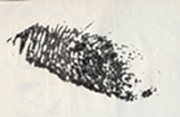Doubt in the Darlie Routier case: The timeline
August 21, 2012
As previously discussed, Darlie Routier is on death row in Texas. She has been there for 15 years. She was accused and convicted of murdering her five year old son Damon. She was charged, but never tried, in the death of her oldest son Devon. There is a growing body of evidence suggesting there was a rush to judgment in this case – one that could result in the execution of an innocent woman.
That is, unless something is done to stop it.
The most important consideration in Darlie Routier’s case is the timeline. The prosecution’s case against Darlie was circumstantial, resting entirely on the notion that she staged the crime scene in a very short amount of time to mislead investigators.
In earlier articles we looked at the fingerprint evidence in this case as well as the strange occurrences before, during, and after. This article will focus on the timeline immediately surrounding the murders. The information provided in this timeline description comes from testimony given by the medical examiner, Janis Townsend-Parchman, the first two police officers on the scene, and paramedics who responded to the 911 call. The information can be verified through court transcripts. Darlie’s testimony was not used to support the timeline. Instead, I used the conversation recorded on the 911 tape to verify Darlie’s words and actions, as well as testimony given by others who were present at the time each event occurred.
The 911 call is the basis for the timeline since it was recorded and provides a second-by-second description of what was happening in the Routier home for almost six minutes. Testimony is used to fill in the gaps and provide information about what happened in the minutes after the 911 call ended.
The Timeline
On June 6, 1996, Darin Routier, Darlie’s husband, reported he was asleep in the upstairs bedroom when he was suddenly awakened. Darlie was sleeping on the couch in the family room. Devon, 6, and Damon, 5, were sleeping on the floor in the family room in front of the television. Police would later testify that upon arriving at the scene, the television was still on.
According to the statement Darin gave to the police, he woke up because he “heard a noise and then Darlie screaming loud.” He reportedly ran down the stairs and went into the living room. He spotted Devon on the floor and the coffee table tipped over. He went to Devon and knelt down to investigate whether he was hurt.
Darin testified at trial that upon coming down the stairs, Darlie went straight to the phone and to the kitchen sink to get towels. We will now examine the timeline on a minute-by-minute basis.
2:30 a.m.
Darlie’s call to 911 began with her screaming, “somebody came in!” She went on to tell the dispatcher that she and her children had been stabbed. Based on a transcript of the 911 call, Darin’s voice is first heard thirty seconds into the call. At the 55 second mark, Darlie asks frantically, “Oh my God…what do we do?” The dispatcher did not respond because she was calling for assistance over the radio.
Darin testified that upon discovering Devon with gashes in his chest, he began to perform CPR. Darin explained that “Darlie was running back and forth from the kitchen, over to Damon, and then she came over to Devon.” When asked what she was doing in the kitchen he answered “getting towels”. He described her as “trying to stop the bleeding” and “trying to hold his chest together,” referring to the couple’s oldest child, Devon.
Officer Waddell was 1.9 miles from the Routier home on 5801 Eagle Drive. Lt. Walling was 3.1 miles from the home. Both received the call regarding the emergency at the Routier home and began driving toward the house. Paramedics were also alerted. This is confirmed through testimony.
2:31 a.m.
One minute and seven seconds into the 911 call, Darlie is heard talking to Damon. She says, “Damon…hold on honey…” She is again heard speaking to Damon one minute and 48 seconds into the call. She said something unintelligible, followed by what sounded like, “…do you want honey…hold on.” The dispatcher responded by stating she could not understand what Darlie was saying. Darlie replied, “I’m talking to my babies…they’re dying…”
Darin can still be heard speaking in the background of the 911 tape.
2:32 a.m.
Two minutes and twenty seconds into the call, Darlie is heard speaking to Damon. She said, “hold on, honey, hold on.” Darin is also heard in the background of the 911 call during this time frame.
2:33 a.m.
In testimony, Darin depicted the arrival of the first officer, David Waddell, on the scene. Darin and Waddell gave slightly different accounts in that Darin implied the officer came to the door, but Waddell testified to seeing Darin in front of the house. Waddell explained the two met in the yard by the fountain and then went into the house.
Waddell’s arrival is confirmed through the 911 recording. Three minutes and 45 seconds into the call, a police officer’s voice is identified. He is heard saying, “…look for a rag…” Darin testified the officer “froze” and stopped moving once he entered the home and observed what had happened there.
Waddell would later testify that he asked Darlie repeatedly to help her son. He would say that each time he asked she refused. This is not supported by the 911 call. Moreover, it is important to note that while Darlie was on the phone she carried on conversations with multiple people, sounding as though she were completely panicked. She is heard speaking to Damon, Darin, the police officer, and the dispatcher throughout the entire call.
In fact, three minutes and 48 seconds into the call, Waddell is heard saying, “…lay down…ok…just sit down.” He had a very short window of time where he could have been asking Darlie – who was herself injured – to render aid to Damon. However, he is not heard doing this. He is instead heard directing Darlie to sit down.
It is unknown exactly why Waddell failed to provide medical aid to Damon upon arriving as he testified the child was alive, moving, gasping for air, and looking around the room. Additionally, Waddell testified that he did not go into the garage where Darlie informed him a person had fled.
His testimony supports Darin’s claim that he stood there in the home, waiting for backup.
2:34 a.m.
Within four minutes into the 911 call, Darlie begins to sound even more desperate. In the span of a minute, she asked the dispatcher twice about the ambulance and when it would arrive at the home. She pleaded to the dispatcher, “…they’re barely breathing…if they don’t get here they’re gonna be dead!”
Darin is heard during this time frame, saying, “they took…they ran…”
Four minutes and 18 seconds into the call, the dispatcher tells Darlie there is a police officer at the front door. Waddell is already in the home at this time because his voice has been identified on the 911 tape during the later part of the third minute. The police officer at the door was likely Lt. Walling because he testified to arriving at the home in around this time frame.
If true, it means that Waddell was in the home for approximately 46 seconds before Walling arrived. During that time, Darlie was still on the phone with 911 and was attempting to provide details to the officer about what happened.
Paramedic Jack Kolbye testified that when he arrived at the home one officer was already there and another was directly behind him. In testimony, the paramedic identified the officer that came right after him as Walling. Kolbye explained that the paramedics waited just under two minutes before going into the home because they were waiting for an officer to secure the scene.
2:35 a.m.
Darin’s voice is not heard during the remainder of the call. However, Darlie is heard on the 911 tape saying, “Somebody who did it intentionally walked in here and did it, Darin…” This implies that Darin was in the area when she made this statement.
Five minutes and 33 seconds into the call the dispatcher asks if the police officer is there. Darlie says, “yes”. The dispatcher then tells her to to go talk to the officer. The dispatcher does not realize that Darlie has been carrying on multiple conversations at the same time throughout the call.
2:36 a.m.
Walling entered the backyard to secure it, according to his testimony.
2:37 a.m. to 2:38 a.m.
Within this time frame, the paramedics were given the approval to enter the home. Kolbye went straight to Damon. He attended to Damon for two minutes inside of the home before moving him into the ambulance because it was too chaotic in the home. He stated that Damon was still barely alive when he got to him. He testified that Damon gasped for air as he turned him over. While he was with Damon, he observed the light begin to go out of his eyes.
Further Discussion
It is critical to note the activities surrounding the 911 call for two reasons. First, the prosecution claimed that Darlie murdered her two children, cut her neck, cut her arm, tried to clean up in the kitchen, deposited a sock several houses away in the alley way, returned to the home to break a glass, and then screamed for help. Second, the prosecution painted Darlie as a cold-blooded killer who was not the least bit concerned with the welfare of her children.
The 911 call disproves the latter, but what does it say about the staging?
Let’s look at one of the medical examiner’s testimony. Dr. Janis Townsend-Parchman testified at Darlie’s trial. One of the topics she provided an expert opinion on was the length of time Damon Routier could have survived his injuries. Dr. Townsend-Parchman was skeptical Damon would have lived more than a few minutes upon receiving the stab wounds to his back.
Prosecutor Greg Davis asked Dr. Townsend-Parchman to give an estimate of the amount of time she believed Damon could have survived his injuries. She responded, “minutes”. She stated that if all four wounds were inflicted at the same time, or within a very short period of time, he would have died within “minutes”.
She testified that she could not tell exactly how long he would have lived, estimating on several occasions it would be just “minutes”. Defense attorney Mulder asked if it would be less than five minutes and she responded “likely”. She went on to add, “And that, from the time he collapsed, until the time he actually expired, would probably be another few minutes.”
Mulder attempted to ask the doctor to give an exact time frame, asking her if it could be as much as eight or nine minutes. She testified, “You can’t tell.”
On redirect, Davis touched on the length of time Damon could have survived once again. “Can you give us an estimate of how long this child might have live if, say, stab wound 1 had been inflicted and then the other three were inflicted sometime later on?” She responded, “What we’re talking about, a few to several more minutes.”
From the time Darlie began the 911 call, to the time the paramedic stated Damon took his last breath, about eight minutes passed. Remember, Darlie was not on the phone with 911 until after Darin came down the stairs and attended to Devon. It is important to factor the length of time it would have taken for Darin to wake upon hearing a noise and appear in the family room when estimating how much time Darlie had to stage a crime scene.
According to Janis Townsend-Parchman, Darlie had approximately zero to 60 seconds to stage the scene and injure herself. If the maximum amount of time Damon was likely to live is nine minutes, the amount of time spent on the 911 call must be subtracted. Additionally, the nearly two minutes it took for the paramedics to enter the Routier home must be subtracted. Finally, the paramedic testified that Damon was still alive during the two minute time period he provided aid to the child inside the home. The paramedics arrived on the scene five minutes after the call to 911 was made. They waited almost two minutes for the scene to be secured. Damon was still alive during the two minute time frame the paramedic attended to him. This adds up to between eight or nine minutes, depending on the exact moment Damon died in the paramedics care.
Now you have to ask yourself: Did Darlie really have time to do everything the prosecution claimed she did before she made that call to 911?
As previously mentioned, a sock with Devon and Damon’s blood was found several houses away. It was on the ground near a trash can. There was no blood trail near the sock. If Darlie placed it there as the prosecution contended, she had to have done it after the boys were fatally injured and before she slashed her own neck. She would have had to have done this in bare feet, or else she had to take even more time upon arriving back at her home to remove her shoes. If barefoot, she would have taken longer to deposit the sock.
Already we are looking at about a minute of time, but we still have not factored in Darlie’s injuries. How much time would it have taken to injure herself? To break the glass to make it appear as though it had been knocked out of the wine rack by an intruder?
Why not wait until she is absolutely certain both boys are dead before screaming to get Darin’s attention? Damon was alive when police arrived and when the paramedic attended to him. If she stabbed her children, why did she leave an obviously surviving witness?
The fact is, Darlie did not have the amount of time to do everything the prosecution said she did. It simply does not make sense. One need only look at the 911 call and various testimony to figure that out. Unfortunately, it takes a lot of painstaking work to break the timeline down as I have above. Had the jury been able to do that, I have to seriously doubt they would have been able to convict Darlie.
Please take a moment and share these articles with others to help raise awareness about Darlie’s case. The series of articles is located here, along with links to other information and videos.









You must be logged in to post a comment.